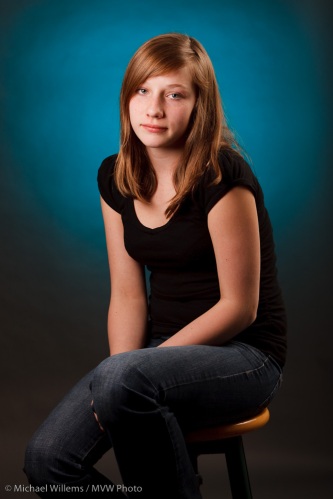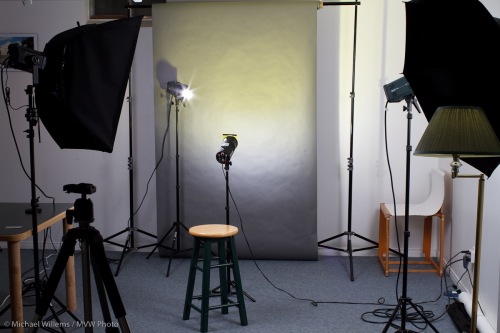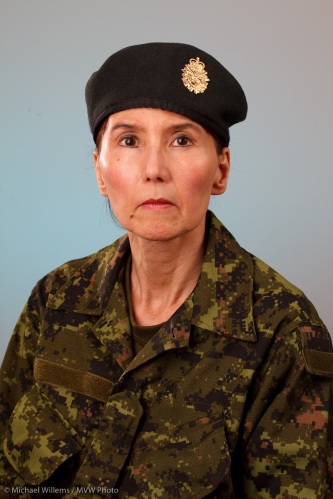Here’s a “quick start” for lighting a face:
- For a man, start with having the main light come from 45 degrees above, at an angle of 45 degrees left or right (“Rembrandt lighting”)
- For a woman, start with having the main light come from 45 degrees above, straight in front (“Butterfly lighting:)
The latter looks somewhat like this:
I took that snap at last Tuesday’s Phoenix “Advanced Flash” workshop. And you can see how: another course participant is holding a 430EX flash off camera, which I am firing from the main camera using TTL light control. Aperture and shutter speed, and ISO, are set so that available light is two stops darker (i.e. it provides the fill light).
Why this rule-of-thumb of “from straight in front” for women? Because it minimizes texture and features, and hence best shows beauty.
Please do not be hung up on these “rules” – they are merely good start points.
To some extent this snap is also an example of “short lighting”: I am lighting the side of the face that is narrower to the camera. This thins, which in the case of this beautiful woman is not necessary, but in case of larger people, or people with very round faces, can be a useful technique.













